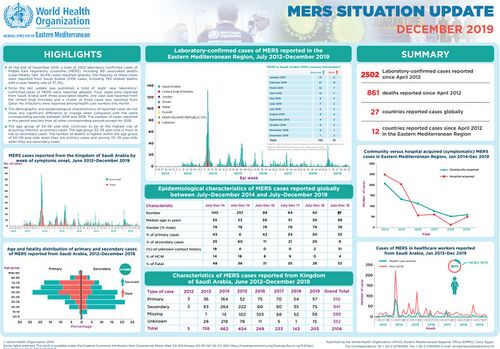Difference between revisions of "Group07 proposal"
| Line 31: | Line 31: | ||
The reasons are as follow: | The reasons are as follow: | ||
| − | *According to WHO, “Major UN study finds alarming lack of knowledge about HIV/AIDS among young | + | *According to WHO, “Major UN study finds alarming lack of knowledge about HIV/AIDS among young people.” |
*According to Avert, “There is no cure for HIV, although antiretroviral treatment can control the virus.” | *According to Avert, “There is no cure for HIV, although antiretroviral treatment can control the virus.” | ||
| − | *According to HIV gov, “HIV has cost America too much for too long and remains a significant public health issue and more than 700,000 American lives have been lost to HIV since | + | *According to HIV gov, “HIV has cost America too much for too long and remains a significant public health issue and more than 700,000 American lives have been lost to HIV since 1981.” |
Due to the absence of a cure, there is a higher priority to the insights of HIV as there is a possibility of this virus escalating into a global epidemic. Furthermore, the general public has a preconceived notion that they will less likely be infected by HIV which explains the little attention given to the virus. However, low risk does not equate to no risk. While this virus might not be a global epidemic yet, the situation is still severe in the U.S. and this issue should be addressed. | Due to the absence of a cure, there is a higher priority to the insights of HIV as there is a possibility of this virus escalating into a global epidemic. Furthermore, the general public has a preconceived notion that they will less likely be infected by HIV which explains the little attention given to the virus. However, low risk does not equate to no risk. While this virus might not be a global epidemic yet, the situation is still severe in the U.S. and this issue should be addressed. | ||
This visualization project will also serve as an educational tool to educate the risk about HIV and complement the 2019 U.S. plan in ending the HIV Epidemic by 90% in 2030 with the help of data and visualization tools. | This visualization project will also serve as an educational tool to educate the risk about HIV and complement the 2019 U.S. plan in ending the HIV Epidemic by 90% in 2030 with the help of data and visualization tools. | ||
Revision as of 01:03, 1 March 2020

| Proposal | Poster | Application | Research Paper |
Contents
Project Motivation
Problem
HIV/AIDS, a chronic manageable disease, is a global pandemic that has created unprecedented challenges for physicians and health infrastructures. There is no cure for HIV yet. However, treatment can control HIV and enable people to live a long healthy life.
Over the years, there have been substantial media coverage and resources to educate the public on the danger of HIV and how to avoid being infected with it. These resources can be found from organizations such as the Ministry of Health (MOH), Centers for Disease Control and Prevention (CDC)World Health Organisation (WHO). However, these websites tend to cluster descriptive critical information in their visualizations and in a table format which makes information difficult for the reader to grasp.
Motivation
Among all the deadly viruses, for this IS428 project, our group will focus our resources on the virus – Human Immunodeficiency Virus aka HIV in the United States (U.S.) context.
The reasons are as follow:
- According to WHO, “Major UN study finds alarming lack of knowledge about HIV/AIDS among young people.”
- According to Avert, “There is no cure for HIV, although antiretroviral treatment can control the virus.”
- According to HIV gov, “HIV has cost America too much for too long and remains a significant public health issue and more than 700,000 American lives have been lost to HIV since 1981.”
Due to the absence of a cure, there is a higher priority to the insights of HIV as there is a possibility of this virus escalating into a global epidemic. Furthermore, the general public has a preconceived notion that they will less likely be infected by HIV which explains the little attention given to the virus. However, low risk does not equate to no risk. While this virus might not be a global epidemic yet, the situation is still severe in the U.S. and this issue should be addressed. This visualization project will also serve as an educational tool to educate the risk about HIV and complement the 2019 U.S. plan in ending the HIV Epidemic by 90% in 2030 with the help of data and visualization tools.
Objectives
With the comprehensive dataset available on Centers for Disease Control and Prevention, we will be focusing on the objectives below:
- To explore geospatial distribution of HIV cases.
- To gain insights on the trend of HIV cases and the fatality rate over the years.
- To understand the treatment given to the HIV patients across different states over the years.
- To gain insights on the demographics of the reported HIV patients.
Dataset
Below are the data sets that TEAM HIVA will be using for the visualisation:
| Dataset/Source | Data Attributes | Rationale Of Usage |
|---|---|---|
|
Source: Centers for Disease Control and Prevention |
|
|
|
Source: Centers for Disease Control and Prevention |
|
|
|
Source: Centers for Disease Control and Prevention |
|
|
|
Source: Centers for Disease Control and Prevention |
|
|
Background Survey of Related Work
| Learning Points | Area of Improvement | Solution |
|---|---|---|
|
|
|
Reference List
Insert reference
Technical Challenges & Mitigation
Insert technical challenges & mitigation
Storyboard
Insert storyboard
Project Timeline
Insert timeline
Comments
Please feel free to leave your comments here! :D
